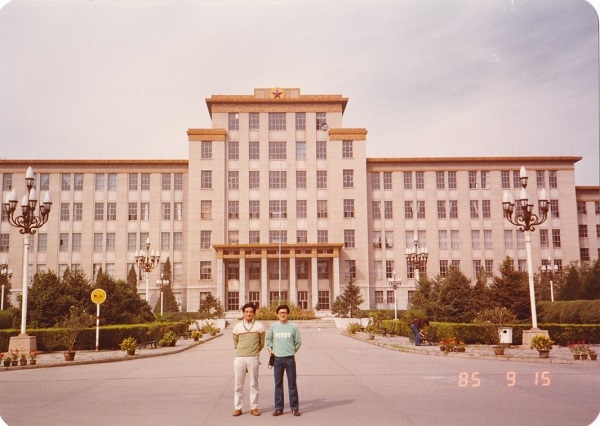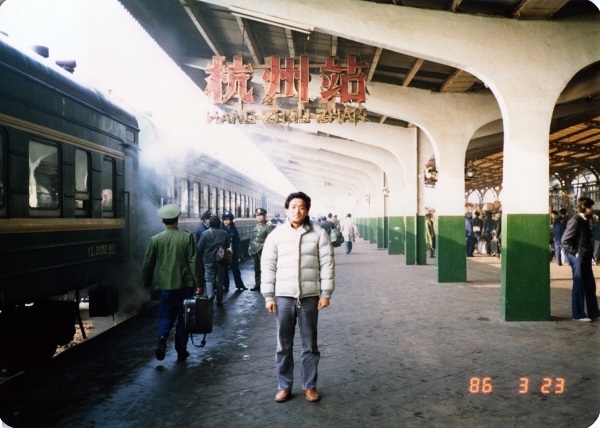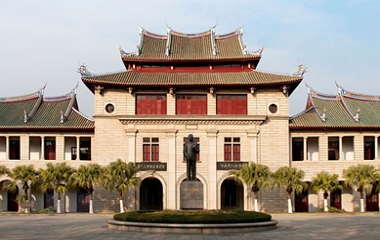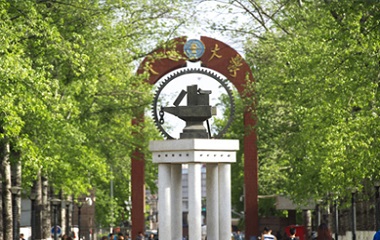[Japan] Asato Miyagawa, Beijing Language and Culture University

In September of 1985, I came to China to study Chinese at the Beijing Language Institute (Currently known as Beijing Language and Culture University). Since my graduation, I have been working on business communications between China and Japan, involving banking business, education, IOT consultation and so on, which allows me to have the opportunity to visit many cities on China’s mainland.
Public transportation: from fuel-driven to electric buses, metros extending in all directions
In 1985, the main public vehicles in Beijing were buses and tramcars. At that time, the passengers, when taking a bus, had to buy their bus tickets from the steward. The steward often repeated it loudly with a strong Beijing accent : “Mei piao er de mai piao er” (those without a ticket hurry up and buy one).
Since at that time my Chinese language skill was at its infancy, I could not understand what was being said exactly. Therefore, when he looked at me, I wondered why he asked me to buy the ticket though I had already paid him.
In the past two years, I have been to cities such as Hangzhou, Dalian, and Wuxi. Now, in Hangzhou all diesel-driven buses have been replaced with electric buses.These buses are cleaner and quieter than the old ones, and there is no more black exhaust. I have never seen such electric buses in Japan, so the experience in Hangzhou made me happy.
I often introduce my Japanese friends the advantages of electric buses, and every time I do this, I feel a little bit proud.As for metros, there are well-developed metro networks in many big cities as Beijing and Shanghai. Even in cities like Hangzhou, Dalian and Wuxi, there are also brand-new subways that are very comfortable.
Over 30 cities in China are covered by metro lines. Both electric buses and metros are environment-friendly tools, and I am looking forward to the new achievement made inthese transportationtools.
The high speed: high-speed train surpasses shinkansen
In 1985, it took 17 hours from Beijing to Shanghai by train, therefore flying was more time-saving. By contrast, it only takes four and a half hours by high-speed train now. Beside the ever increasing speeds in railway technology, the efficiency of transportation services has also been improved. In the past, we had to buy tickets at the city’s ticket offices.

Now, I can book the ticket online even when I’m in Japan. It is of great convenience. Today, whenever I have a business trip to China, I take the high-speed train, where a punctual journey is the norm, and it comes with beautiful views and fancy food.There are many railway fans in Japan who do not know the joy and comfort by taking the high-speed train in China.
If they know the charm of China’s high-speed train, there will be more Japanese tourists to China. In my opinion, China’s high-speed train has already surpassed the Shinkansen.
The unchanged loving and caring heart
In 1985, maybe due to problems regarding diesel engine, vehicle failures, such as a sudden shutdown, often happened. Every time the bus suddenly broke down, all the passengers would get off to push the car forward together.At that moment, I was amazed at the cooperation spirit of Chinese people.
Without any words, they made their efforts together, and then the bus started running again. Today, as diesel-driven buses are made obsolete, engine failure is a thing of the past. However,the loving heart and the cooperation spirit of the passengers have never changed. For example, when passengers, especially the young such as high school or junior students, come across a senior, they offer their seat with no hesitation.
In my eyes, such kind upbringing is very common in China, and the young generation has already made it a habit. I think such behaviors are the achievements of both China’s school education and its public moral education. I’m looking forward to new progress in the modernization of China’s public transportation.
From the changes I saw from 1985 to now in China, the development of public transportation can be said to be “the miracle of the century’’. While what I value most is the unchanged loving heart of Chinese passengers.
The story is from "My Beautiful Encounter with China" Essay Competition organized by the Chinese Service Center for Scholarly Exchanges (CSCSE).










